| Listing 1 - 10 of 29858 | << page >> |
Sort by
|
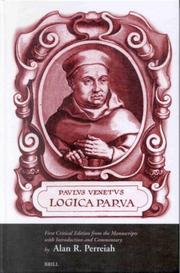
ISBN: 9004123652 9004453385 9789004123656 9789004453388 Year: 2002 Publisher: Leiden; Boston : BRILL
Abstract | Keywords | Export | Availability | Bookmark
 Loading...
Loading...Choose an application
- Reference Manager
- EndNote
- RefWorks (Direct export to RefWorks)
The most widely read logic book in fifteenth-century Italy, Logica Parva was copied in more than 80 manuscripts and 25 editions. By transmitting Oxford logic to Italy it influenced the development of logic, science and philosophy in the Renaissance. This first critical edition from the manuscripts locates the Logica Parva within the tradition of late medieval logic and semantics. The Introduction gives an inventory of all manuscripts of the Logica Parva and an extensive Commentary analyzes the work's key terms and concepts.
Logic --- Early works to 1800. --- Logic - Early works to 1800
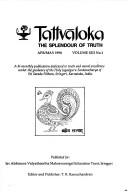
ISBN: 0710302770 9780710302779 Year: 1990 Publisher: London : Kegan Paul,
Abstract | Keywords | Export | Availability | Bookmark
 Loading...
Loading...Choose an application
- Reference Manager
- EndNote
- RefWorks (Direct export to RefWorks)
Yoga --- Early works to 1800. --- Yoga - Early works to 1800.
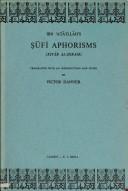
ISBN: 9004071687 9789004071681 Year: 1984 Publisher: Leiden Brill
Abstract | Keywords | Export | Availability | Bookmark
 Loading...
Loading...Choose an application
- Reference Manager
- EndNote
- RefWorks (Direct export to RefWorks)
Sufism --- Early works to 1800 --- Sufism - Early works to 1800
Book
ISBN: 3515050795 9783515050791 Year: 1991 Volume: 37 Publisher: Stuttgart : Franz Steiner,
Abstract | Keywords | Export | Availability | Bookmark
 Loading...
Loading...Choose an application
- Reference Manager
- EndNote
- RefWorks (Direct export to RefWorks)
Sufism --- Early works to 1800 --- Sufism - Early works to 1800
Book
ISBN: 8883341392 9788883341397 Year: 2004 Volume: 16 Publisher: Roma Viella
Abstract | Keywords | Export | Availability | Bookmark
 Loading...
Loading...Choose an application
- Reference Manager
- EndNote
- RefWorks (Direct export to RefWorks)
Trinity --- Early works to 1800. --- Trinity - Early works to 1800.
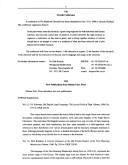
ISBN: 0197224164 Year: 1995 Publisher: London Oxford university
Abstract | Keywords | Export | Availability | Bookmark
 Loading...
Loading...Choose an application
- Reference Manager
- EndNote
- RefWorks (Direct export to RefWorks)
Byrthfert of Ramsey was one of the outstanding scholars produced by the late Anglo-Saxon church; in the year 1011 he completed his principle work, the Enchiridion, a handbook designed to explain the complexities of medieval date-reckoning--called computus. Never before adequately edited, this new edition illuminates our knowledge of scientific scholarship in the eleventh century. The text is accompanied by a full introduction, apparatus criticus, facing English translation, and detailed commentary. Also included is an appendix containing the Latin computus which the Enchiridion was designed to elucidate and glossaries of the Old English and difficult Latin words occurring in the Enchiridion itself.
Book
ISBN: 8822235185 Year: 2001 Publisher: Firenze Olschki
Abstract | Keywords | Export | Availability | Bookmark
 Loading...
Loading...Choose an application
- Reference Manager
- EndNote
- RefWorks (Direct export to RefWorks)
Book
ISBN: 0877281793 Year: 1972 Publisher: New York Samuel Weiser
Abstract | Keywords | Export | Availability | Bookmark
 Loading...
Loading...Choose an application
- Reference Manager
- EndNote
- RefWorks (Direct export to RefWorks)
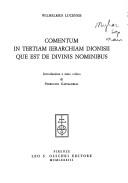
ISBN: 8822231481 9788822231482 Year: 1983 Volume: 3 Publisher: Firenze Olschki
Abstract | Keywords | Export | Availability | Bookmark
 Loading...
Loading...Choose an application
- Reference Manager
- EndNote
- RefWorks (Direct export to RefWorks)
Theology --- Early works to 1800 --- Theology - Early works to 1800
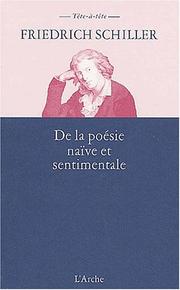
ISBN: 9782851815132 285181513X Year: 2002 Publisher: Paris: L'arche,
Abstract | Keywords | Export | Availability | Bookmark
 Loading...
Loading...Choose an application
- Reference Manager
- EndNote
- RefWorks (Direct export to RefWorks)
Il faut s'imaginer : d'un côté un poète qui, dès le début de sa carrière, connaît un grand succès - également commercial -, qui est admiré et vénéré par toute une élite intellectuelle, et de l'autre côté un auteur, certes génial, mais révolté, aux prises avec le pouvoir, en quête permanente d'argent et à la santé fragile. Sur l'invitation de l'un (Goethe), l'autre (Schiller) se retrouve à Weimar, à la fin du XVII siècle, le centre de la vie culturelle allemande. Où Goethe joue un rôle des plus déterminants. siècle, le centre de la vie culturelle allemande. Où Goethe joue un rôle des plus déterminants. La tentation a dû être grande de comparer les deux esprits, leur style, leurs ouvres, et Schiller nous a laissé un traité classique sur la littérature, sur précisément deux sortes de littérature : l'une naïve et l'autre sentimentale. Qu'est-ce que cela veut dire ? Pour Schiller, le poète naïf est en harmonie avec la nature et le sentimental se définit en contradiction avec elle. À la recherche de l'unité perdue, celui-ci essaie de la rétablir sur un niveau supérieur. Il vit de la tension entre l'idéal et la réalité d'où il tire la forme de la satire, de l'élégie, de l'idylle. Toutes ces formes mesurent la réalité imparfaite à l'idéal. L'élégie pleure l'idéal perdu et l'idylle montre le chemin de l'Arcadie vers l'Élysée. Mais ce n'est que lorsque le réalisme se marie à l'idéalisme que les extrêmes (surtension et atonie, empirisme et fantasque) sont évités et la perfection atteinte.
Poetry --- Early works to 1800 --- Poetry - Early works to 1800
| Listing 1 - 10 of 29858 | << page >> |
Sort by
|

 Search
Search Feedback
Feedback About UniCat
About UniCat  Help
Help News
News